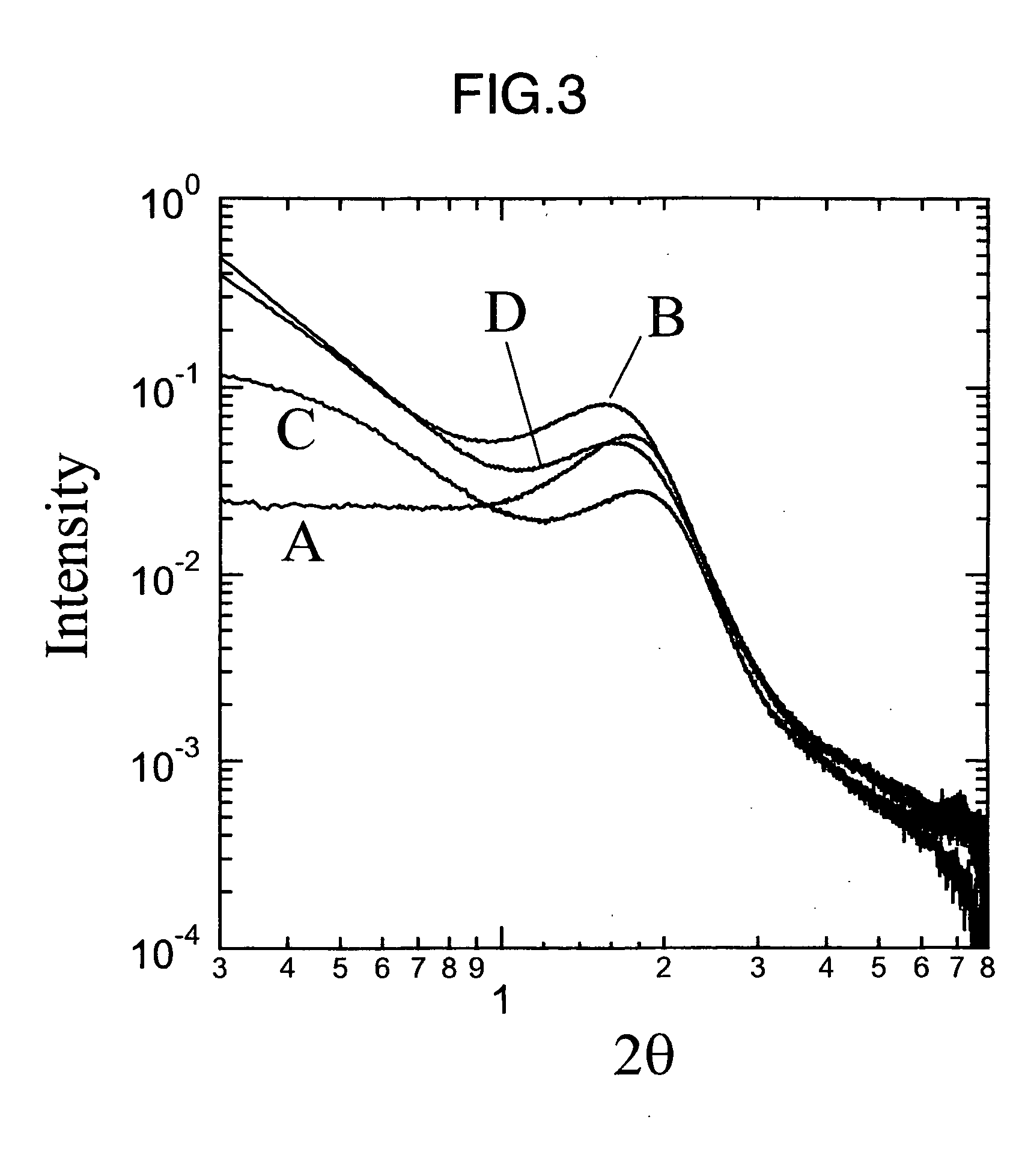Membrane electrode assembly for polymer electrolyte fuel cell
a fuel cell and membrane electrode technology, applied in the direction of non-aqueous electrolyte cells, cell components, electrochemical generators, etc., can solve the problems of durability, no suggestion regarding chemical stability and oxidation resistance, no reports regarding chemical stability, dimensional stability, etc., to achieve superior chemical stability, heat resistance and oxidation resistance, and high durability.
- Summary
- Abstract
- Description
- Claims
- Application Information
AI Technical Summary
Benefits of technology
Problems solved by technology
Method used
Image
Examples
reference example 1
[0157] Synthesis of CF2═CFOCF2CF2CF2CF2SO2F (No. 1)
[0158] A mixture of 900 g of ICF2CF2CF2COF, 39 ml of tetraglyme, 390 ml of adiponitrile and 15 g of potassium fluoride was charged into a 2 liter autoclave, and was added with 633 g of hexafluoropropene oxide (HFPO) over 15 hours while stirring at 0° C. After the reaction, excess HFPO was vented and the bottom layer was taken out of the reaction mixture by liquid separation. The liquid thus obtained was distillated to obtain 1,066 g of ICF2CF2CF2CF2OCF (CF3) COF.
[0159] Boiling point: 77° C. (14 kPa)
[0160]19F-NMR δ (CFCl3 base): 24.7 (1F), −62.3 (2F), −79.9 (1F), −83.7 (3F), −87.2 (1F), −114.8 (2F), −125.7 (2F), −131.7 ppm (1F).
[0161] Then, 490 g of ICF2CF2CF2CF2OCF(CF3)COF was added drop-wise at 120° C. to a 1 liter three-necked flask equipped with a mechanical stirrer and a reflux cooler, containing 276 g of dry potassium carbonate beforehand. Stirring was continued for an hour still after completion of drop-wise addition. Repl...
reference example 2
[0172] Synthesis of CF2═CFOCF2CF2CF2CF2SO2F (No. 2)
[0173] A mixture of 300 g of I(CF2)4I, 675 ml of acetone and 225 ml of water was charged into a 2 liter four-necked flask equipped with a reflux column and a stirrer, which was then placed in an ice bath and added to 86.7 g of Na2S2O4slowly. 19F-NMR analysis of the reaction mixture after stirring for 3 hours showed generation of 35.3% by mole of I(CF2)4 SO2Na and 8.1% by mole of NaO2S(CF2)4 SO2Na. After acetone and I(CF2)4 I were distilled off from the above reaction mixture using an evaporator under reduced pressure, the reaction mixture was added to 300 ml of water and then extracted 3 times with ethyl acetate. The ethyl acetate solution was concentrated under reduced pressure to obtain brown solid, which turned out to be I(CF2)4 SO2Na by 19F-NMR analysis (yield: 35.3%).
[0174] The above viscous liquid containing I(CF2)4 SO2Na was transferred to a 1 liter four-necked flask equipped with a gas blowing tube and further added with 3...
reference example 3
[0181] Synthesis of CF2 ═CFOCF2CF2CF2CF2CF2CF2SO2F
[0182] A mixture of 122 g of I(CF2)6I, 450 ml of acetone and 50 ml of water was charged into a 2 liter three-necked flask equipped with a reflux column and a stirrer, which was then placed in an ice bath and added to 48 g of Na2S2O4 slowly, followed by stirring at 25° C. for 2 hours. 19F-NMR analysis of the reaction mixture showed generation of 68% by mole of I(CF2)6SO2Na and 6% by mole of NaO2S(CF2)6SO2Na. After acetone and water were distilled off from the above reaction mixture, the residue was added to 300 ml of HFC43-10 mee and then filtered to remove a solid material. The HFC43-10 mee was distilled off from the filtrate under reduced pressure to recover 31.6 g of I(CF2)6 I. On the other hand, the solid material was added to 500 ml of water and then extracted 3 times with ethyl acetate. The ethyl acetate solution was concentrated under reduced pressure to obtain solid, which turned out to be I(CF2)6 SO2Na by 19F-NMR analysis.
[...
PUM
| Property | Measurement | Unit |
|---|---|---|
| melt flow rate | aaaaa | aaaaa |
| glass transition temperature | aaaaa | aaaaa |
| temperature | aaaaa | aaaaa |
Abstract
Description
Claims
Application Information
 Login to View More
Login to View More - R&D
- Intellectual Property
- Life Sciences
- Materials
- Tech Scout
- Unparalleled Data Quality
- Higher Quality Content
- 60% Fewer Hallucinations
Browse by: Latest US Patents, China's latest patents, Technical Efficacy Thesaurus, Application Domain, Technology Topic, Popular Technical Reports.
© 2025 PatSnap. All rights reserved.Legal|Privacy policy|Modern Slavery Act Transparency Statement|Sitemap|About US| Contact US: help@patsnap.com



